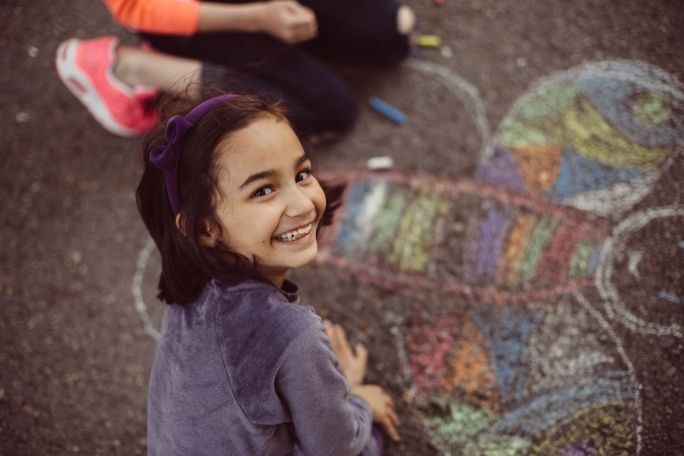Lesson summary
Throughout the Creative Sustainability unit, students have explored ways that messages about sustainability are expressed through art. In this lesson, students will explore how places can be affected by human activity and use artwork to illustrate how places can show the impacts of environmental issues. They will select a place, for example, the school yard, a local park, coral reef, or bushland, and create an artwork that juxtaposes a ‘healthy’ version with a version experiencing negative environmental impacts. Students will write an artist statement that will accompany their artwork and take an active role in organising a class exhibition.
Learning intentions:
Students will...
- understand that human activity can have an environmental impact
- be able to visually convey their ideas about the impact of environmental issues on places
- learn to apply watercolour techniques and processes.
Success criteria:
Students can...
- use art as a vehicle for sharing messages on sustainability
- use a range of watercolour techniques
- write a statement that describes the intention of their artwork.
Lesson guides and printables
Curriculum links
Select your curriculum from the options below.
Lesson details
Curriculum mapping
Australian Curriculum content descriptions:
Year 5 & 6 Visual Arts:
- Develop and apply techniques and processes when making their artworks (ACAVAM115).
- Plan the display of artworks to enhance their meaning for an audience (ACAVAM116).
- Explain how visual arts conventions communicate meaning by comparing artworks from different social, cultural and historical contexts, including Aboriginal and Torres Strait Islander artworks (ACAVAR117).
Syllabus outcomes: VAS3.1, VAS3.2
General capabilities: Literacy, Critical and Creative Thinking, Ethical Understanding
Cross-curriculum priority: Sustainability OI.4, OI.5
Relevant parts of Year 5 & 6 Visual Arts achievement standards: Students explain how ideas are represented in artworks they make and view. Students use visual conventions and visual arts practices to express a personal view in their artworks. They demonstrate different techniques and processes in planning and making artworks. They describe how the display of artworks enhances meaning for an audience.
Unit of work: Creative Sustainability – Year 5 & 6
Time required: 180 mins (to be delivered over separate sessions).
Level of teacher scaffolding: High – guide student research and artwork creation. Coordinate student exhibition.
Resources required
- Student Worksheets – one copy per student
- Device capable of presenting a video to the class
- Watercolour Techniques Handout
- Recycled A4 paper (one clean side required)
- A3 cartridge paper, Goldfaber graphite pencils, watercolour pencils, watercolour brushes and jars of clean water, rulers, PVC-free erasers and Grip sharpeners
- Social Action Project Exhibition Hint and Tips
Skills
This lesson is designed to build students’ competencies in the following skills:
- Collaboration
- Communication
- Community Engagement
- Creativity
- Empathy
- Ethical Understanding
- Global Citizenship
- Problem Solving
Additional info
Faber-Castell has long understood the importance of creativity to all people, especially to young people. It is also continuously searching for environmentally friendly processes and high-quality materials to enhance children’s creative experience throughout every development phase. For more information about Faber-Castell, click here.


Welcome back!
Don't have an account yet?
Log in with:
Create your free Cool.org account.
Many of our resources are free, with an option to upgrade to Cool+ for premium content.
Already have an account?
Sign up with:
By signing up you accept Cool.org's Terms and Conditions(Opens in new tab) and Privacy Policy(Opens in new tab).